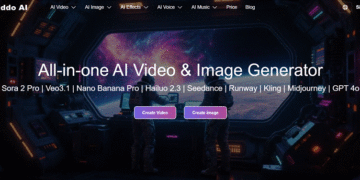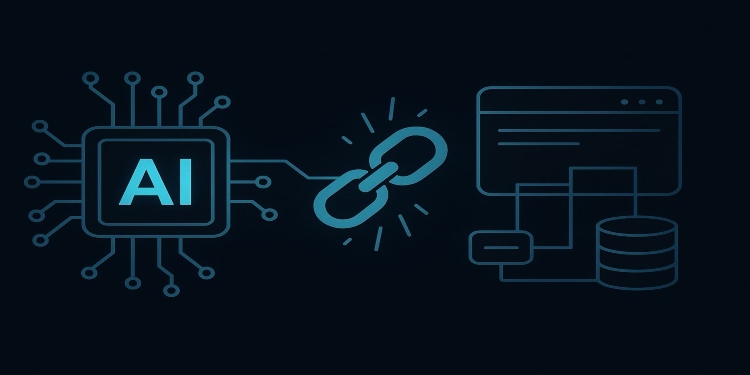Sometimes it all starts with a line at a flight meeting: “We would like something smart — for reports, for predictions, to be like our competitors.” Then everything develops according to a familiar scenario: a pilot, a couple of beautiful graphs, integration “sideways” and — silence. After a couple of months, the model turns into an invisible entity in the system: it seems to exist, but nobody uses it. The IT department pretends that everything is fine, the business forgets what it wanted to automate, and marketing can hardly remember why it was launched in the first place.
However, the real failure isn’t in the code or in the math — it’s organizational. AI isn’t a “feature” you can slap onto a system like a chatbot or a calendar widget. It’s not just another line on the roadmap. Without a role in the structure, without someone accountable, without support and retraining cycles — even a brilliant model becomes a fossil in production. This is exactly where most projects fall apart. And that’s why experienced teams — like those behind custom artificial intelligence development services at Implex — start not with algorithms, but with architecture. They ask: “What’s the job of this model inside your company?” Because if there’s no place for it to live — it dies.
Where does the AI break down?
Many companies think of AI as something “superstructural”. Add a button, do a couple of integrations, call it predictive analytics or a recommendation system, and voilà, the business is now smart.
However, the developers from Implex, who have been providing AI development services for years, know that the point of failure is not in the algorithm. It is much earlier. It is in the organizational structure. More precisely, in its absence.
Everything starts with the fact that the project is launched “under the hype” — without a model owner, without SLA, without understanding who will service the outputs. A system that is not built into the company’s cycle lives on the sidelines. Today it’s trendy, tomorrow it’s forgotten. No adaptation, no support, no re-training. Just a new report that no one looks at.
What the infrastructure looks like where AI lives, not “exists”
Instead of pathos statements — specifics. This is what turns a model from a presentation slide into a real working mechanism:
| Component | Why is this important |
| Model owner | Someone who is responsible for its work and interaction with the business |
| Monitoring | Failure tracking, alert logic, response to anomalies |
| Retraining | Retraining as data becomes outdated |
| Documentation and UI | So that a person can understand what the model does and why |
| Validation cycle | QA specifications, ethical review, benchmarks |
If even one link is missing — the system risks becoming “just another project that didn’t take off.”
Why “AI as a feature” is a switch of concepts
Here you put a model in a product. Now pay attention: it has its own interface, its own data, its own update schedule. At what point does it become part of the operational cycle? Who takes responsibility for its recommendations? Who knows how It thinks?
Experts on the field put it simply: AI cannot be “added”. It can only be embedded.
If you don’t understand who in the company needs the model, at what exact moment it should make decisions, on what metrics it will be useful — you are not implementing AI, you are just decorating the system.
Two scenarios: Same algorithm. Different outcomes
For clarity, let’s compare the paths of two companies that have implemented the same ML module.
| Parameter | Company A (no infrastructure) | Company B (with AI structure) |
| Implementation speed | 3 weeks | 3 months |
| Using the model after 6 months | < 20% of cases | > 80% of cases |
| Number of incidents | 7 (including UI crashes and false alerts) | 1 (data processing error) |
| ROI | Negative | +28% to operational efficiency |
| Employee trust level | “Better with your hands” | “Let the system decide” |
What changed? Not the algorithm. It’s the context. In one case AI is embedded, in the other it is taken out of context.
How to avoid pitfalls
Often, the funnel of failure looks like this: first you bought a ready-made model, then you started to “embed” it, then you decided that it was easier to hire another analyst.
To avoid the same pitfalls, it is worth thinking ahead:
- Do we have a process map where the model can be embedded?
- Who will support it — I mean, not the developer, but the business owner?
- How will the logic for retraining and updates be structured?
- Is the team ready to understand, argue and trust the model’s output?
As long as there are no honest answers to these questions, AI remains outside the business system boundary. For AI to live, it needs an infrastructure — not only technical, but also organizational. With roles. With procedures. With quality metrics. With a budget to support it. And, yes — the right to “kill” the model if it is harmful.
If AI is already in place — just not working
This is a separate story. Sometimes the project is already running. The code is written. The algorithm is built. But the result is not there. Employees do not use it, data is not updated, the business does not understand why it is needed.
Implex has encountered these dozens of times. The right approach is not to “rewrite everything”, yet to build a living support structure around a working model. That’s why their custom AI development services start not with architecture, but with an audit: where the model is now, who is using it, and what is hindering it. And only then — routes, roles, validation, and interfaces.
Conclusion
AI is not space technology. It’s engineering. And like any engineering, it requires an environment, support, responsibility. No model will save a business that doesn’t know what it’s doing or why it’s doing it.
If you seriously want AI to live in a company, give it a place. Give it a role. Give it business processes that it’s embedded in.
And if you’re already up and running — except that the system is stalling, perhaps it’s time not to change the model, but to rethink where it lives.
Intelligence, even artificial intelligence, only works where it is understood. And where it is expected.












































































